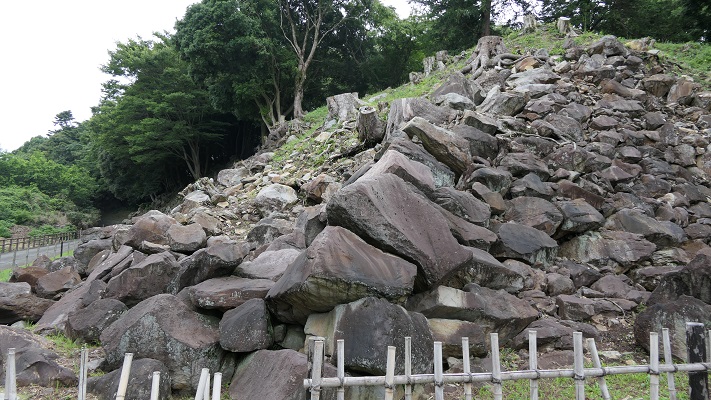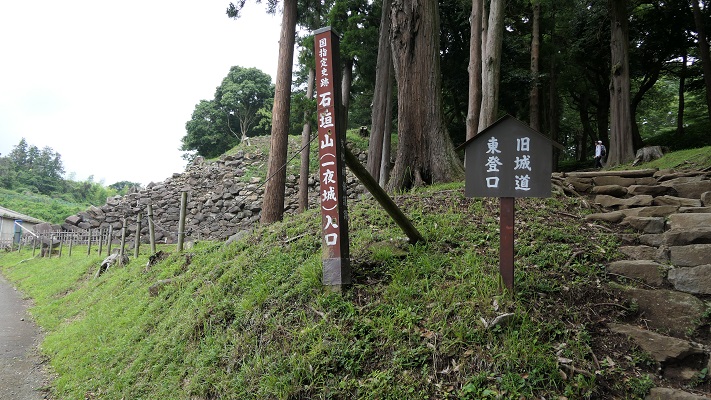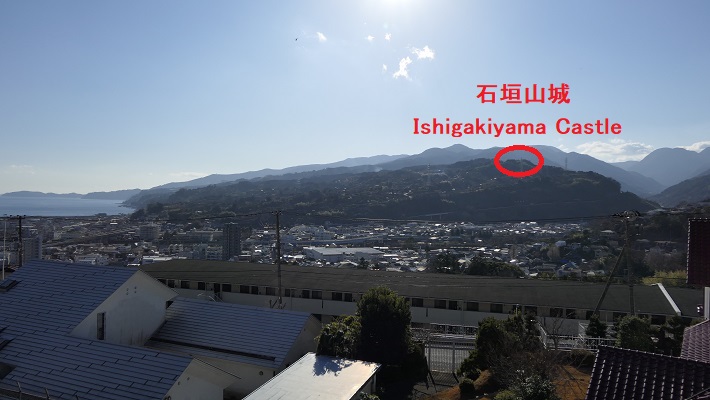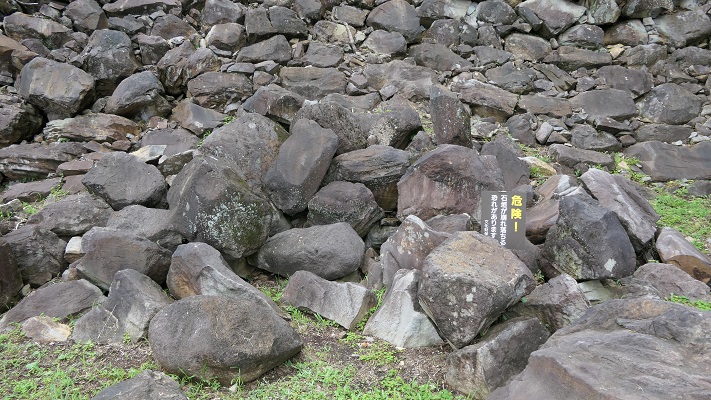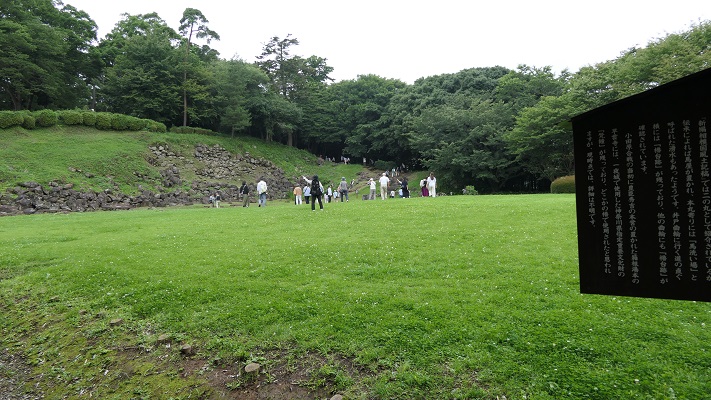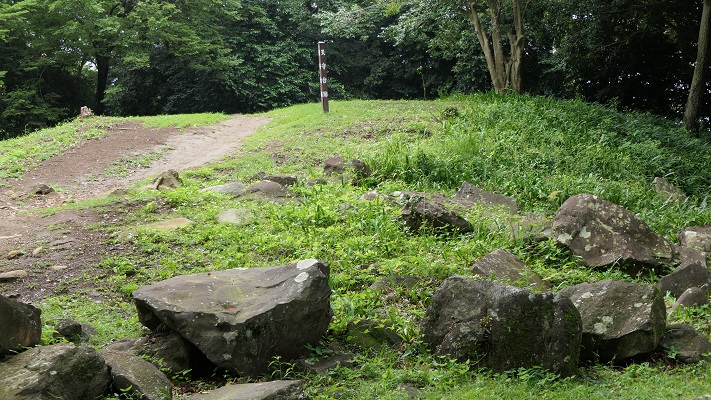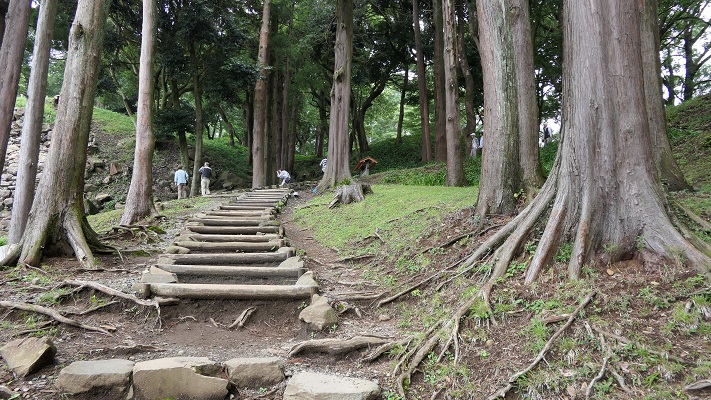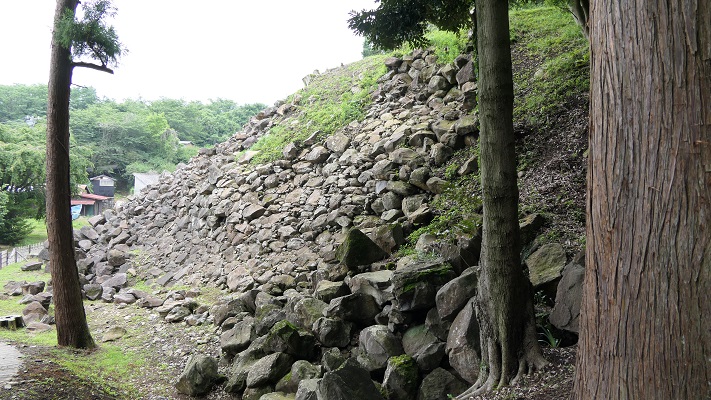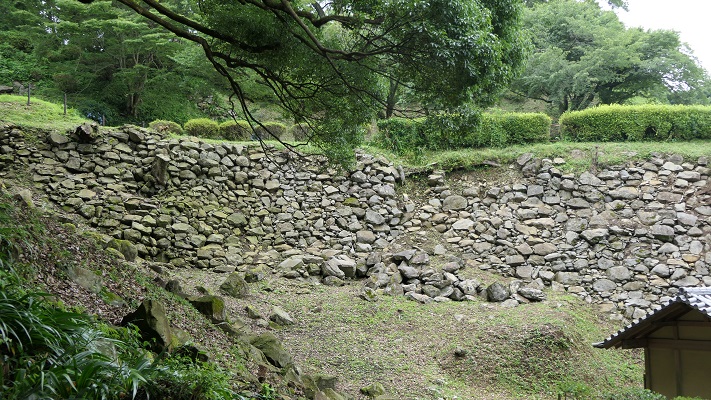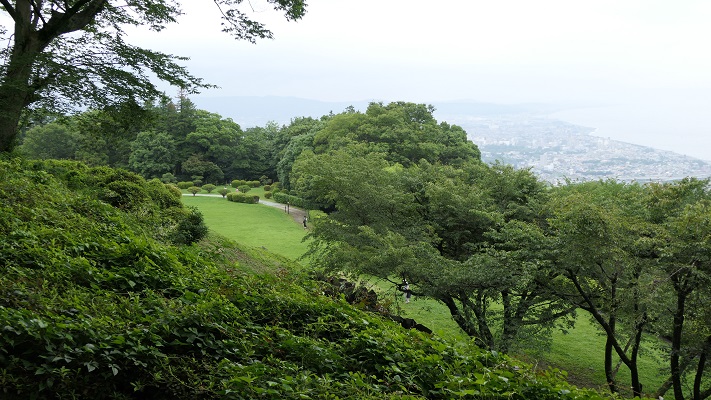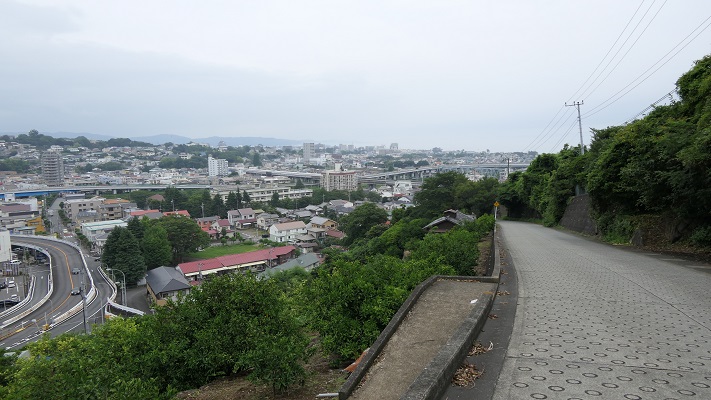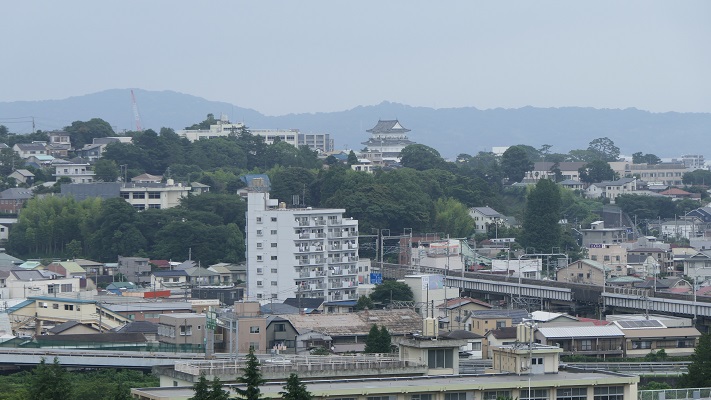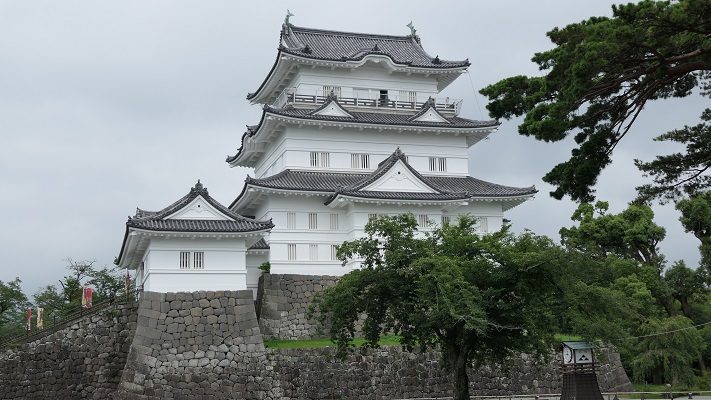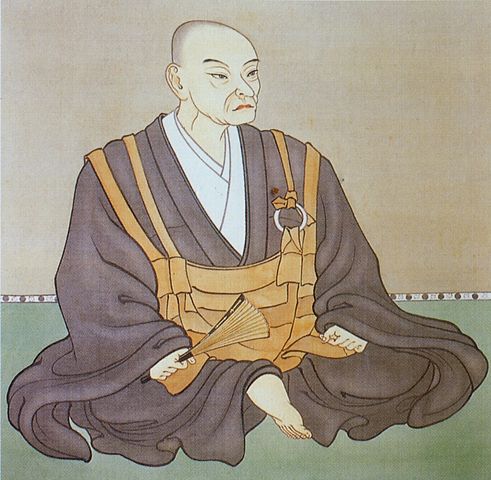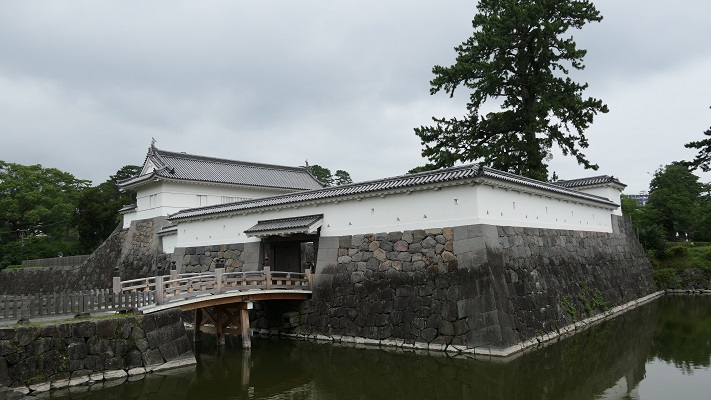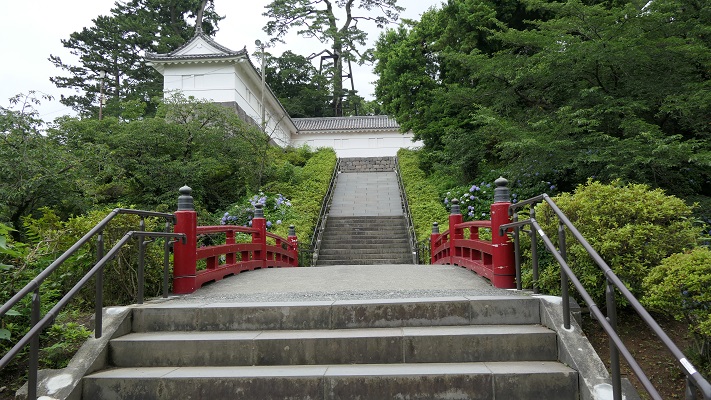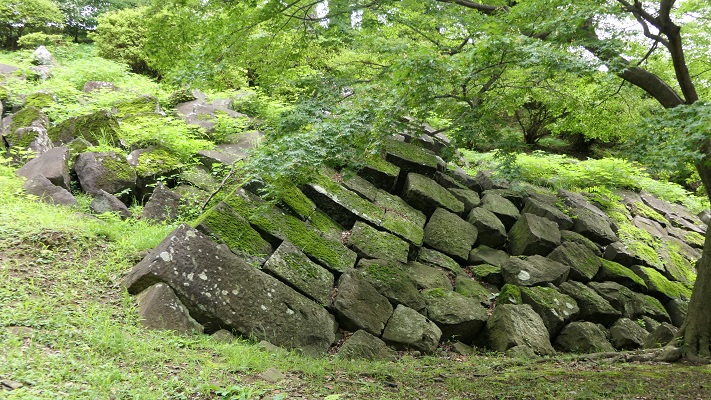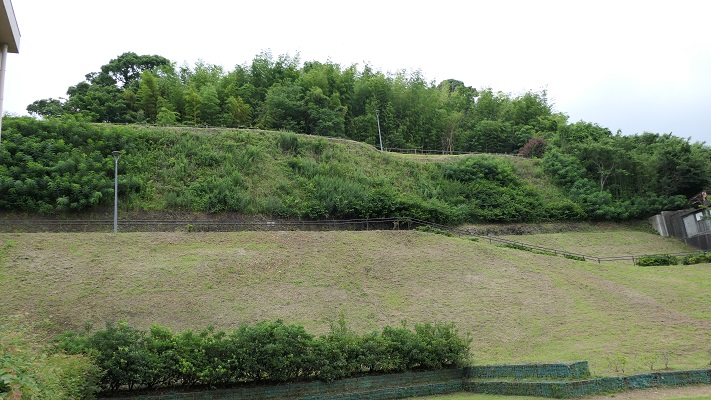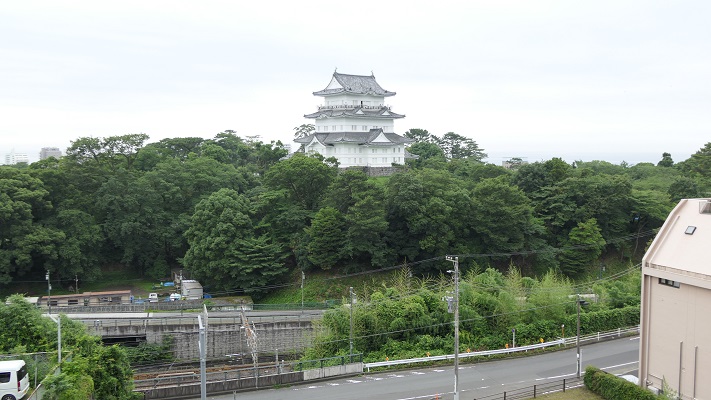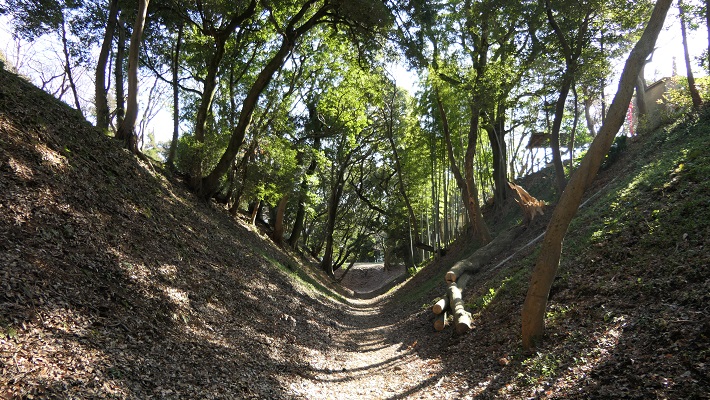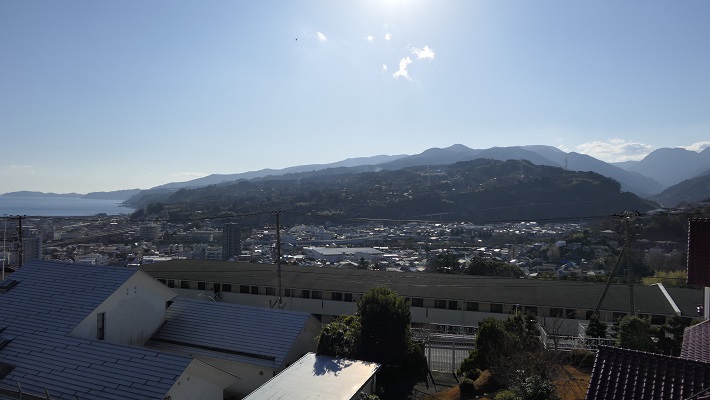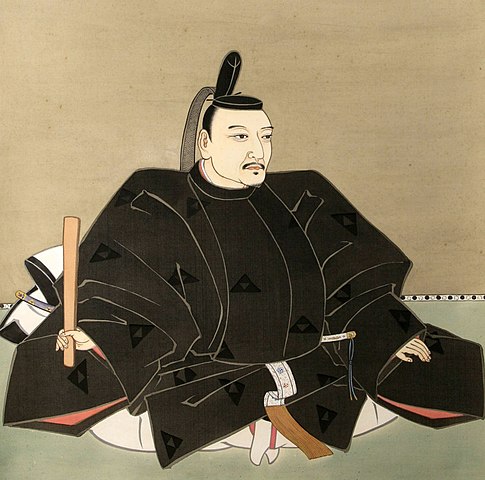立地と歴史~Location and History
犬山城は、その古風な天守や、眺望がよく知られています。でもこの城にはもっと知られるべき見どころがあるのです。
Inuyama Castle is known for its old Main Tower or “Tenshu” and their landscape. But the castle has more attractions you can find.
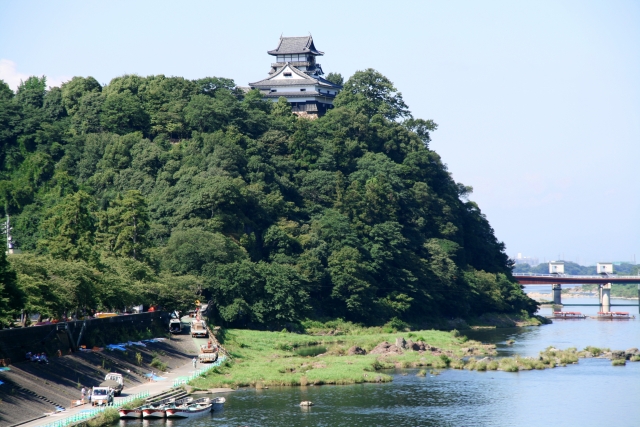
国境に立地~It is located around the boder of provices
この城は最初は1537年に地方領主の織田信安により築かれたと言われています。木曽川の畔、40mの高さの丘の上にあります。この地点は尾張国(現在の愛知県の一部)の端に当たり、尾張国と美濃国(現在の岐阜県の一部)の国境のすぐ近くでした。また、水上交通の要所でもありました。
It is said that the castle was first built in 1537 by a local clan, Nobuyasu Oda. It was located at the top of a 40m height hill beside Kisogawa River. The spot was on the edge of Owari Province ( now part of Aichi Pref.), right next to the border between Owari and Mino Province ( now part of Gifu Pref.), and it was also important for water transportation.
有力戦国大名の標的に~Great warlords targets it
結果として、戦国時代には多くの有力な戦国大名がこの城を手に入れようとしました。最初は、織田信長が美濃攻略の足掛かりとしてこの城を得ました。次には、豊臣秀吉が1584年の徳川家康との小牧長久手の戦いのときに、この城に本陣を構えました。
As a result, many great warlords aimed to capture the castle in the Warring States or “Sengoku” Period. First, Nobunaga Oda got the castle as the foothold before he invaded Mino. Secondly, Hideyoshi Toyotomi used the castle as his stronghold when he fought with Ieyasu Tokugawa in the Battle of Komaki and Nagakute in 1584.


成瀬氏が城と町を支配~Naruse clan governs the castle and town
最終的には、徳川幕府が確立すると、幕府は成瀬正成を徳川の親藩である尾張藩の付家老として、この城に据えました。成瀬氏は大名ではありませんでした。それでも、江戸時代の間中例外として、大名のように犬山城と城下の支配を許されたのです。
Lastly, after the Tokugawa Shogunate was established, it placed Masanari Naruse at the castle as the Attendant Chief Retainer for Tokugawa’s relative Owari Domain. The Naruse clan was not a lord. However, they were allowed to govern Inuyama Castle and the castle town like a lord all through Edo Period as an exception.


特徴~Features
城周辺の地図~The map around the castle三方は急崖~Steep cliffs in three directions
現在、天守だけが現存していますが、城がどんなだったかは今でも見て取ることができます。城は北の方角の背後に木曽川があり、自然の要害になっています。城がある丘は三方向(北、東、西)が急崖であり、このようなしつらえはよく「後ろ堅固」と呼ばれます。更には、この崖はより垂直になるよう削られていて、このことを「切岸」といいます。その上、この辺りは深い空堀に囲まれていました。
Now, only the Tenshu remains, but we can still see how the castle was. The castle has a natural hazard as Kisogawa River in the back of the north side. The hill of the castle also has steep cliffs in three directions ( north, east and west). Such a condition is often called “back secure” or “Ushiro-Kengo”. In addition, the cliffs are cut more vertically which is called “Kirigishi”. Moreover, the area was surrounded by a deep dry moat.
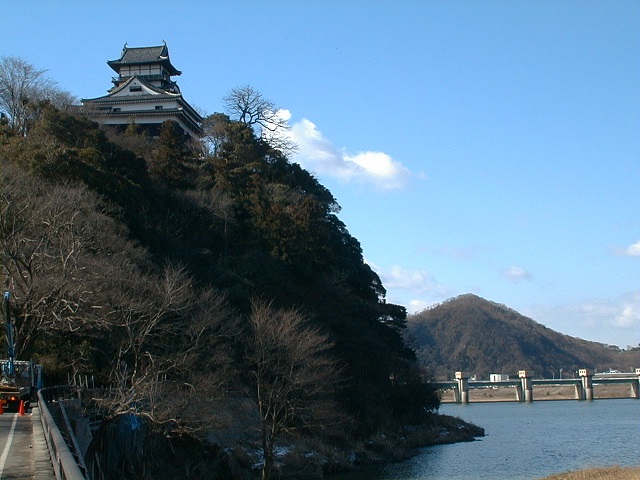
南方に大手道~Main Route in the south
城は、南の方角に「大手道」と呼ばれる一本道でのみ開かれていました。今はその道に沿って簡単に城の中心と天守に行くことができますが、過去においては、5つの門によって厳重に守られていました。
The castle is open to only one route in the south called the Main Route or “Ote-michi”. It is easy to go to the center of the castle and Tenshu through the route now, but it was heavily guarded by five gates in the past.
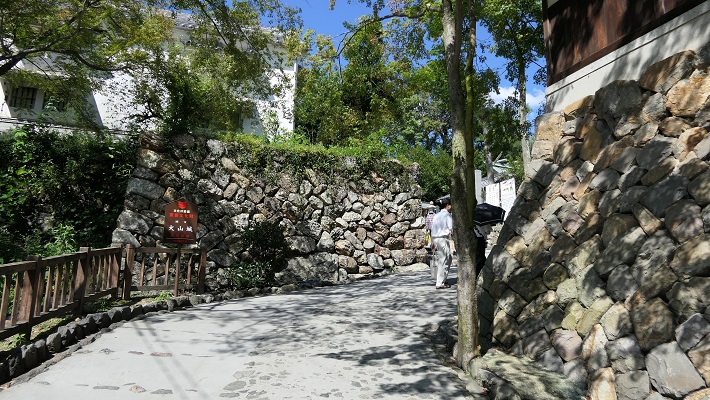
門の間にまっすぐな部分がありますが、ここもまた高い壁と櫓がある曲輪に挟まれていました。最後の門である「鉄門」は再建されています。
The straight part of the route between the gates was also sandwiched by enclosures with high walls and turrets. The last gate called “Kurogane-mon” has been reconstructed.
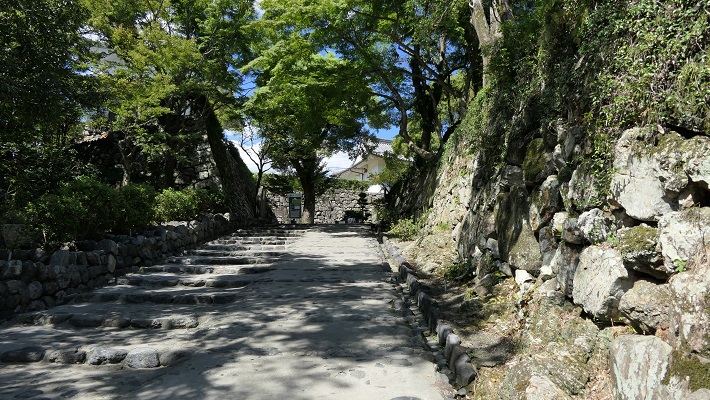
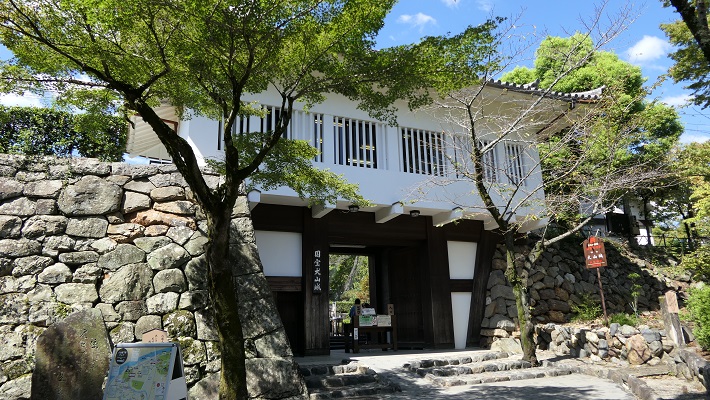
天守の謎~Tenshu is mysterious
天守は国宝で、3層4階+地下2階となっています。初期の天守の形式である望楼型で、日本の現存天守では最古であるかもしれません。但し事はそう単純ではなくて、歴史家や建築家は天守は3段階で作られたと言っています。最初は2層の櫓として作られました。現存の1階と2階は古い工具と方法で作られています。
The Tenshu is a National Treasure. It has three layers and four levels with two extra basements. It shows the first Tenshu style called lookout tower type, and may be the oldest remaining Tenshu in Japan. But it is not that simple. Historians and architects say that Tenshu was built in three steps. The first step built a two story turret, as the remaining first and second floors are made with older tools and in practice.

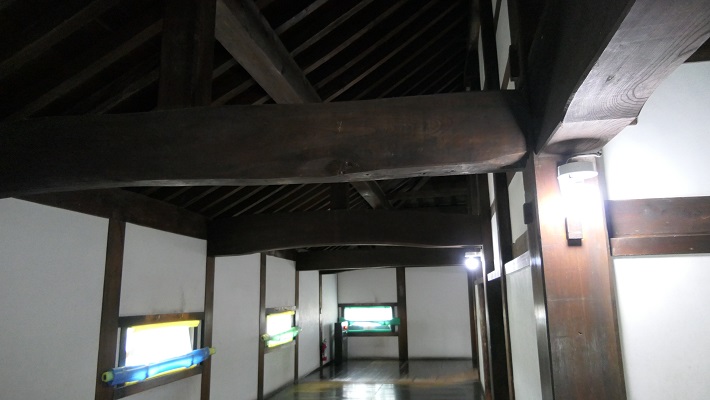
3階と4階は塔のように外を見渡す用途で、新しい工法を使い、2段階目に付け加えられました。最後の段階で成瀬氏が、天守に唐破風や高欄を付けたりして装飾したのです。問題は、いつ最初の建築がなされたかです。もしそれが城の創建と同じ時期であれば、間違いなく最古の天守と言えるでしょう。将来明らかになるかもしれません。
The third and forth floors were added to look outside like a tower, using newer methods in the second step. Lastly the Naruse clan decorated Tenshu by adding a Chinese style gable called “Kara-Hafu” and a veranda at the top floor in the last step. The question is when the first step was done. If it is the same age as the castle itself, it is definitely the oldest Tenshu. It may be proven in the future.

最上階が開放的なので、木曽川とその周辺の素晴らしい景色が眺めることができます。手摺を含む高欄は残っているそのままです。城主の大名と全く同じ体験ができるわけです。
You can see a great view of Kisogawa River and the area around from the open top floor. The veranda including its handrail is original. We can enjoy the exact same experience as the lords who owned the castle.

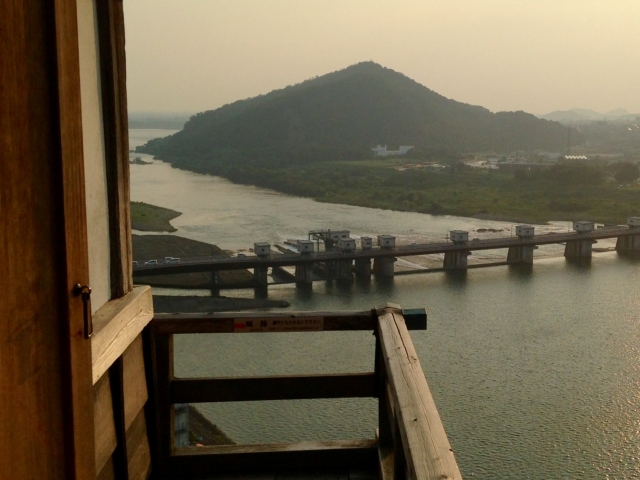
その後~Later History
明治維新後、犬山城は廃城となり、天守を除く全ての建物は撤去されました。1891年、濃尾地震により天守が半ば倒壊しました。その後、以前の領主だった成瀬氏が、彼ら自身で復旧することを条件に再び城を保有しました。犬山城は最近まで私有されていたのです。その間、天守は国宝に指定されました。2008年、犬山城白帝文庫という法人が設立され、将来への保存のため、城を保有することになりました。それ以来、調査研究が続けられています。
After the Meiji Restoration, Inuyama Castle was abandoned and all its buildings were demolished excluding the Tenshu. In 1891, the Tenshu collapsed partly due to the Nobi Earthquake. After that, the former lord, the Naruse clan owned the castle again on the condition that they would restore it. Inuyama Castle had been privately owned until recently. Meanwhile, it was designated as a National Treasure. Such a case was very rare. In 2008, a corporation called Inuyama-jo Hakutei-bunko was established and it has owned the castle to preserve it in the future. Since then, investigations and developments have been done.

私の感想~My Impression
元々、犬山城は戦いのために築かれました。江戸時代には美しい眺望でも知られるようになりました。成瀬氏は城下町も発展させました。その雰囲気は今に残ります。城に行く途中で通って行けます。この城は今や重要な歴史遺産になりました。この城のいろんな側面を見ていただきたいと思います。
Originally, Inuyama Castle was built just for battle. It also became a beautiful landscape in the Edo Period. The Naruse clan developed the castle town, too. Its atmosphere remains even now. You can enjoy it on the way to the castle. The castle is now becoming more important for cultural heritage. I hope you will see many perspectives of the castle.
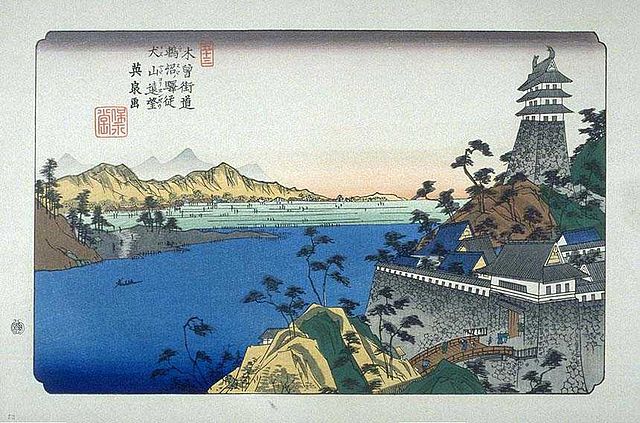
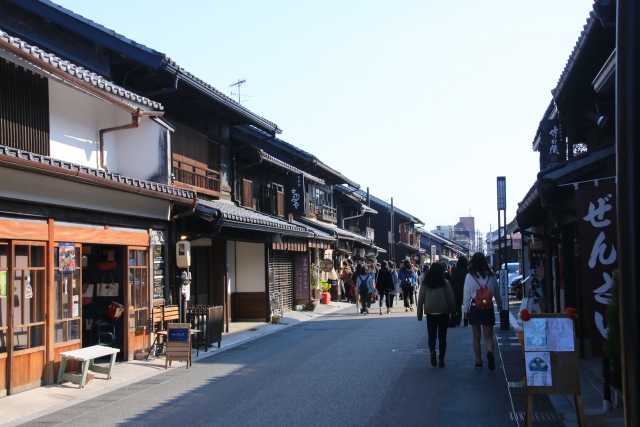
ここに行くには~How to get There
ここに行くには、電車をおすすめします。
犬山駅から:途中城下町を通って歩いて約20分です。
犬山遊園駅から:木曽川沿いを通って歩いて約15分です。
名古屋から両駅まで:名鉄名古屋駅から名鉄犬山線の快速特急に乗ってください。
車の場合は、東名高速道路の小牧ICから約12kmですが、城周辺の道路は混雑気味で、駐車場もあまりありません。
I recommend using the train to get there.
From Inuyama station: it takes about 20 minutes on foot, going through the castle town on the way.
From Inuyama-Yuen station: it takes about 15 minutes on foot, going along Kisogawa River.
From Nagoya to both stations: Take the rapid limited express on Meitetsu Inuyama line from Meitetsu Nagoya Station.
If you want to go there by car, it is about 12 km from the Komaki IC on the Tomei Expressway. But the roads around the castle tend to be crowded, and there are a few parking lots.
リンク、参考情報~Links and References
・国宝犬山城~Inuyama Castle, National Treasure
・「よみがえる日本の城3」学研(Japanese Book)
・「城の科学、萩原さちこ著」講談社ブルーバックス(Japanese Book)

